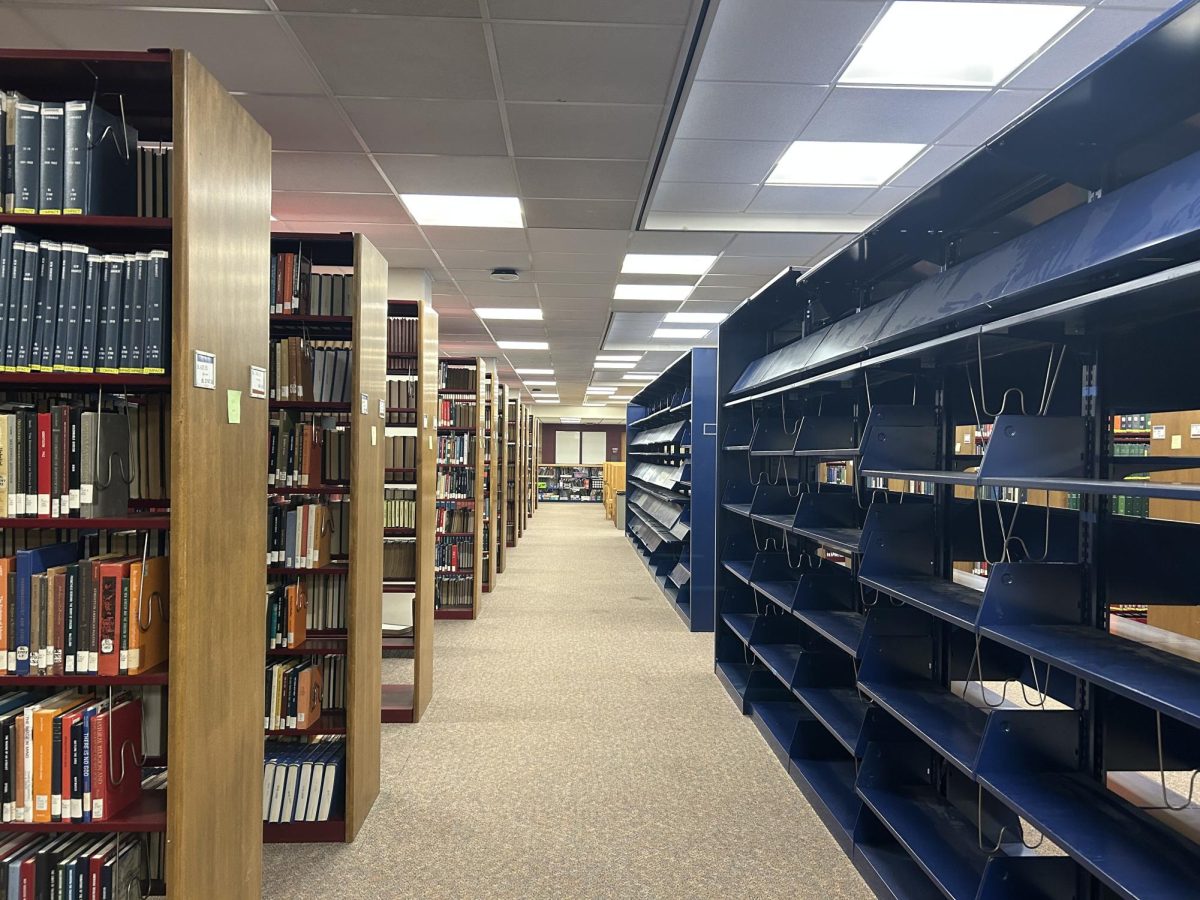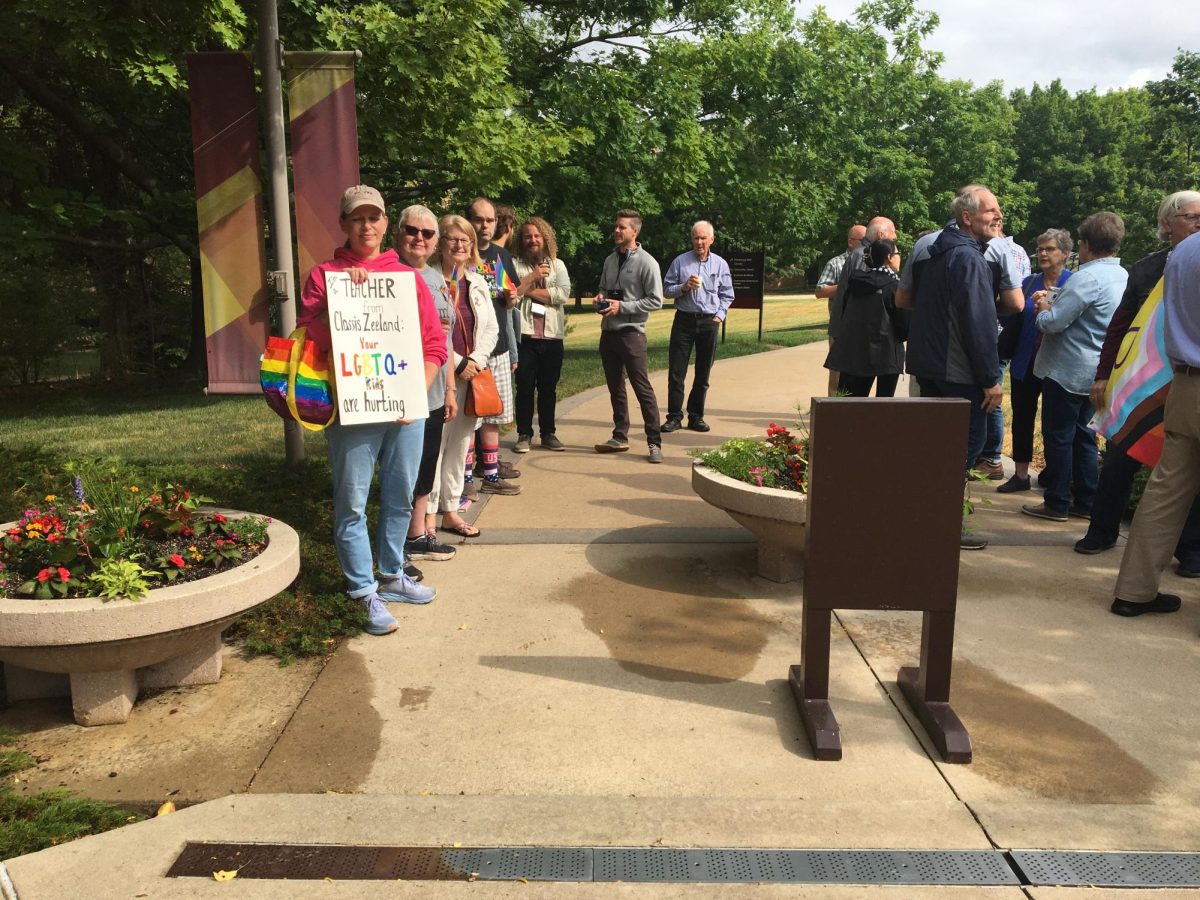In the next few years, Hekman Library will remove 20,000-40,000 physical books and journals from its collection of over 500,000.
According to Dean of the Library David Malone, the library consulted an outside firm for “an analysis that allows the library to do evidence-based decision-making” about how best to fill the needs of Calvin University and Calvin Theological Seminary. The analysis, which compared Hekman’s collection to those of other West Michigan institutions, found that discarding 20,000-40,000 books out of the over 500,000 would best suit Calvin’s needs. However, this does not mean the library plans to lose 20,000-40,000 books worth of information; Malone said “many of these will be replaced with digital versions more readily available to all university and seminary students, residential and distance.”
Removing unused or irrelevant books — a process known as “weeding” — is a common practice in libraries. “A garden can’t always be added to and remain healthy. A garden needs to be weeded and some healthy plants need to be split. So too for a healthy library collection,” said Malone.
Weeding serves many purposes in the library connection. Removing physical copies of books frees up physical space, which can then be filled with updated copies of those books. William Katerberg, curator of the Heritage Hall archive, also mentioned that taking some less-helpful source books off the shelves can decrease distractions for student researchers by directing their attention towards the more helpful sources. Malone echoed this sentiment, saying that large collections of infrequently used books force researchers to “navigate through a great deal of material that may cloud their search.”
However, some people have reservations about the volume of books the library is currently looking to throw out. Kate van Liere, chair of the Historical Studies department, described the shift to digital as a loss for those “excited about the tactile experience of the books.”
According to Hekman Library’s collection review policy, the library’s criteria for removal includes timeliness of information, historical significance and circulation.
Timeliness of information refers to how relevant the information is to the present. For example, the collection review policy says “1958 accounting and nursing information is likely obsolete.” Books with this information have become outdated and are not useful for teaching accounting and nursing today. However, as van Liere pointed out, different people can have “different criteria for what makes a book valuable.” According to van Liere, “historians are interested in outdated ideas,” so those same books could be useful for doing historical research about how nursing and accounting were taught in 1958.
The library does keep this potential use in mind, as one of their criteria for book selection is special historical significance. The collection review policy says that “a book may be outdated, but is still valuable because it is rare or reflects the history of a socio-economic development.” Categories of material retained for this reason include old biblical commentary, which, according to Jeff Lash, a theological librarian for the seminary, “helps us understand the history of interpretation and represents insights drawn from a particular context which can be helpful in another way.”
When librarians consider the circulation of materials, they consider how often materials are used. One of the ways they do this is logging when books are checked out, but books do not have to leave the library to be used. Many materials are used inside the library, and the librarians have a system to track this as well. “When a book is left on a table or elsewhere (we don’t want books reshelved), we scan the book into our system to track in-house usage,” Katherine Swart Van Hof, collection librarian, told Chimes in an email. Librarians use that information to predict the future circulation of that material. According to Malone, “If a book has not circulated during the first six years, the chances of it circulating are one in fifty.”
After librarians check through these conditions, books that are deemed obsolete and unlikely to circulate get removed from the library. From there, some theological journals and books are sent to a seminary in Zimbabwe, but most items are thrown away. This change is partly the result of recent library renovations. “Before the renovation, we would place books for sale on a cart. We don’t have the space for this now,” said Malone.
The library renovations aren’t a major motivation for Hekman getting rid of books. After the addition of Peets in 2019 and the newly completed renovations on the first three floors, Calvin removed some bookshelves to make room for chairs and tables where students can drink coffee, hang out and study for classes.
However, most of the books and journals from these areas were simply moved to other parts of the library. According to William Katerberg, curator of Heritage Hall, there was actually no loss of storage space for journals and books during the renovation. Journals from the third, fourth, and fifth floors are now in a compact storage room in the basement, while the history and social science books from the third floor are now on the fifth.
“As institutions change, so too should their library collections,” said Malone, and change is exactly what Hekman’s collection is doing.






